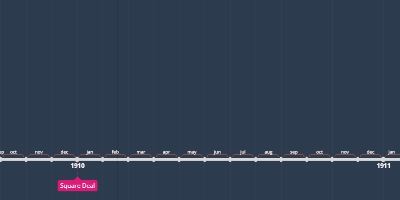Triple Wall Of Privilege (7h 14min, nov 5, 1912 y – 3 h, nov 7, 1916 y)
Description:
The New Freedom sought to achieve this vision by attacking what Wilson called the triple wall of privilege — the tariff, the banks, and the trusts.Tariffs protected the large industrialists at the expense of small farmers. Wilson signed the Underwood-Simmons act into law in 1913, which reduced tariff rates. The banking system also pinched small farmers and entrepreneurs. The gold standard still made currency too tight, and loans were too expensive for the average American. Wilson signed the Federal Reserve Act, which made the nation's currency more flexible.
Unlike Roosevelt, Wilson did not distinguish between "good" trusts and "bad" trusts. Any trust by virtue of its large size was bad in Wilson's eyes. The Clayton Antitrust Act Of 1914 clarified the Sherman Act by specifically naming certain business tactics illegal. This same act also exempted labor unions from antitrust suits, and declared strikes, boycotts, and peaceful picketing perfectly legal.
In two years, he successfully attacked each "wall of privilege." Now his eyes turned to greater concerns, particularly the outbreak of the First World War in Europe.
Added to timeline:
Date:
7h 14min, nov 5, 1912 y
3 h, nov 7, 1916 y
~ 4 years
